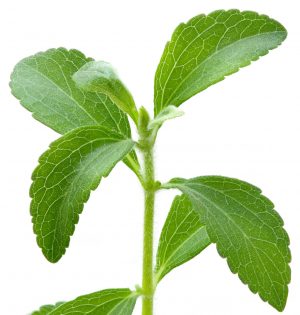Sweet from nature – the sweet jouney (part 5 of 6)
Product development • The crux with sugar of all kinds, most sugar alcohols and highly processed bulk sweeteners is that they give too much energy and too high GI in relation to their sweetness. Therefore, the solution to sugar reduction can be found in the territory of high-intensity sweeteners. But many consumers are sceptical of artificial sweeteners, to put it mildly. Therefore, our sweetening journey continues – in search of the holy grail of sugar reduction. In this chapter, we examine high-intensity sweet substances of natural origin.
In the previous article, we left behind sugars, sugar alcohols, and other bulk sweeteners behind us and we now set the course towards high-intensity sweeteners. The first we encountered was artificial sweeteners. They were no good, so we left their chemical world and continued into the wild.
Back to nature
Ordinary sugar types can be extracted from plants by chopping and steeping them, filtering the decoction and finally refining the sugar. The most obvious example is regular sugar (saccharose) which is extracted from sugar beets or sugar cane.
But sugar is not the only sweet substance that can be extracted from plants in the same or a similar manner. The plant kingdom contains many other sweet substances.
One example is osladin, which is 500 times sweeter than regular sugar and is found in the rhizomes of the fern polypody.
Another is mogrosides, 300 times sweeter than regular sugar, found in monk fruit of the Chinese plant luo han guo, which belongs to the same family as cucumber and melon.
A third example is brazzein which is 2,000 times sweeter than regular sugar and is extracted from the fruit of the West African climbing plant oubli.
But none of these is yet approved in the EU: But, two other sweet substances from plants are.
High intensive sweet substances from natural sources
For foods sold within the EU, there are as yet only two approved high-intensity sweet substances from natural sources.

Steviol glycosides (E 960) are twelve closely related substances which are 200–350 times sweeter than regular sugar and that are extracted from the stevia plant. Except for the steviol glycoside Rebaudioside M (often abbreviated as Reb M), they have, to a varying degree, a bitter taste and metallic aftertaste. Reb M is almost identical in taste to sugar, except the fact that it’s 350 times sweeter. But the most commonly used steviol glycoside is so far Rebaudioside A (abbreviated as Reb A).
Thaumatin (E 957) is about 2,000 to 3,000 times sweeter than regular sugar and is extracted from the West African plant katemfe. It gives a long-lasting sweetness with a liquorice-like aftertaste. Thaumatin can also be used as a flavour enhancer in some foods.
| High intensive sweet substances from a natural source | Sweetness | GI | Energy |
| Steviol glycosides (E960) | 200–350 × | 0 | 0 kcal/g* |
| Thaumatin (E957) | 2 000–3 000 × | 0 | 0 kcal/g* |
| * Contains energy but contributes in negligible amounts due to the small amount needed to give sweetness. | |||
Almost there
Steviol glycosides and thaumatin sounds too good to be true: sweetness without calories, with no effect on the blood sugar level, and from substances from a natural source. Have we finally hit the jackpot?
No, sorry…
The problem with high-intensity sweet substances is precise that they are high-intensity sweet. For example, a mere three grams of steviol glycosides will give the same sweetness as a kilogram of regular sugar. So, if you replace a kilogram of sugar with three grams of steviol glycoside, what do you replace the remaining 997 grams in the product with?
It is very rarely possible to simply remove the regular sugar and replace it with just steviol glycosides. Something else must be added to compensate for the volume and structure that regular sugar brings to a product. The sugar has other properties that must be compensated too. And of course, the taste of regular sugar is about much more than just sweetness. All of which much be replaced.
And if that wasn’t enough, steviol glycosides and other high-intensity sweeteners have flavours of their own that we are not used to. We need to take that into account as well.
This is why it’s not a quick fix to just replace regular sugar with high-intensity sweet substances from natural sources. Each food or beverage presents individual challenges to find solutions that won’t alter the sweetness, taste and mouthfeel.
It takes a kind of expertise and equipment that most don’t have. And it takes time and a lot of money.
So, is there no easier solution with a shorter time to market?
Yes, there is.
In next article, which will be the last in this artcie series, we reach the goal of our journey into the world of sweetening: The sweetened fibres.
Please, share this article if you liked it.
[et_social_share]






